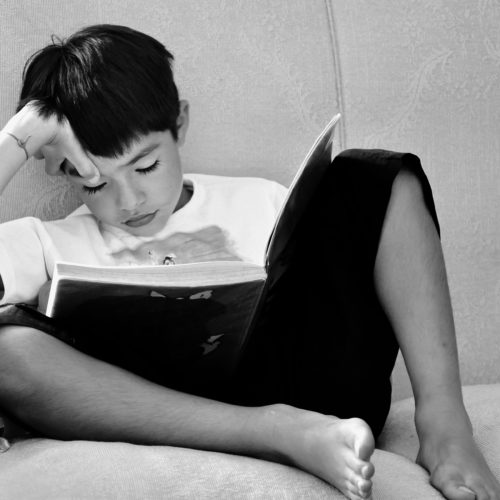When PRI pointed out a few years ago that California had the highest poverty rate in the nation, it’s fair to say it caught many by surprise. How could the biggest state economy in the country, brimming with tech, entertainment, and financial institution wealth, have so many poor?
Turns out that California is also at the bottom of another key statistic: It has the lowest literacy rate in the country.
According to World Population Review, only 76.9% of those 15 and older – considered the adult category – in California are able to read and write. New Hampshire is at the top of the list, with a rate of 94.2%, Minnesota right behind at 94%.
The nothing-to-see-here crowd “will argue that California has a disproportionate number of poor immigrants who bring down the literacy rate,” says PRI’s Lance Izumi. But that doesn’t hold up. Results from the 2019 National Assessment for Educational Progress eighth-grade reading test show that only 18% of low-income California eighth-graders, defined as those eligible for the national school lunch program, scored at or above the proficient level, while 47% of non-low-income eighth-graders in the state scored at or above the proficient level.
“That means,” Izumi says, “that 82% of low-income eighth-graders and 53% of non-low-income eighth graders were not proficient in reading. So, there are a lot of middle-class kids who are not proficient in reading.”
There’s also the we-don’t-spend-enough-on-education crowd. So naturally Gov. Gavin Newsom has a plan to improve literacy that requires money. He wants $500 million to hire and train literacy coaches and reading specialists to help students. While it could be promising, says Izumi, “more money without effective strategies won’t improve student learning.” The outcome largely “depends on how and what these coaches will be teaching.”
“Will it just be more of the same? New York City schools Chancellor David Banks says he’s scrapping the ‘balanced literacy’ reading approach, which many California schools also use, because it has failed. He’s returning to phonic-focused instruction.”
While the public school system in California is turning out students whose educations are below standard, alternatives are becoming more popular. For instance, there are now 8 million home-schooled students in the country, including as many as 400,000 in blue, teachers-union-dominated California, and more than 1,300 charter schools and seven all-charter districts in the state.
The pandemic has been a factor behind the growing interest. But parents have also been learning that taking their children out of public schools makes them better students. The number of charter school students in California grew from about 250,000 in the 2007-2008 school year to more than 600,000 in the 2017-2018 academic year, well before the coronavirus outbreak arrived. Parents know, as Harvard researchers determined, that there is “a larger increase in student achievement for students at charter schools than for students at district schools.” They found, as well, that the improvement in average math scores for African-American eighth-graders in charter schools “was four times larger than for students attending district schools.”
Parents are also aware that home-schooling provides individualized learning that cannot be found in traditional schools, where one size is supposed to fit all, and education is losing ground to indoctrination.
The answer to California’s literacy deficiency is not more money for government schools, but greater school choice for parents. This is true of the entirety of the state’s public education shortcomings.
Kerry Jackson is a fellow with the Center for California Reform at the Pacific Research Institute.

